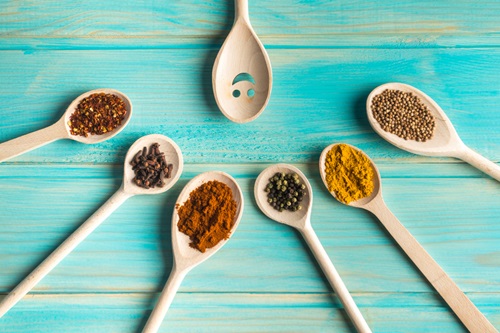Dietary Modifications to lower the Risk for Diabetes
Diabetes affects more than 460 million people globally, with an estimated 95% of those with the disease having type 2 diabetes (T2D) (1). Type 2 diabetes usually develops due to an unhealthy lifestyle and is characterized by impaired insulin production or functioning (2).
Insulin is a hormone that helps the body use glucose (sugar) for energy. Defective insulin production leads to elevated blood sugar levels, which can cause blindness, nephropathies, neuropathies, cancer, and mortality (3, 4). Common risk factors for type 2 diabetes include:
- Obesity
- Stress
- Physical inactivity
- Sedentary lifestyle.
Interestingly, a healthy diet is crucial to maintain healthy blood sugar levels and preventing type 2 diabetes. Including certain foods in the diet can help reduce diabetes risk; examples of such foods are whole-grain carbohydrates, fruits and vegetables, and low-sugar dairy products (5).
At present, type 2 diabetes incidence is increasing worldwide, with current estimates suggesting that the number of people affected will surpass 700 million by the year 2045. This article will explore a few dietary modifications that can reduce an individual’s risk for type 2 diabetes.
Foods that reduce the risk for type 2 Diabetes
Whole-grain carbohydrates
A diet rich in whole-grain carbohydrates can reduce T2D risk. Carbohydrates are converted into glucose in the body and used as a source of energy. The main types of carbohydrates are "complex" and "refined" (6, 7). Refined carbohydrates are associated with an increased risk of obesity and type 2 diabetes.
These carbs are high in sugar and include foods such as white bread, sweets, cakes, and biscuits. Since refined carbohydrates cause large spikes and dips in blood sugar levels, they can induce hunger and cause individuals to indulge in unhealthy snacks. In contrast, complex carbohydrates, particularly whole grains, can lower diabetes risk.
Whole grains, including brown rice, whole-grain bread, and wheat pasta, are packed with nutrients, fiber, and starch and do not induce the same spikes and dips in blood sugar levels. Diverse studies have shown a diet rich in whole-grain carbs can improve metabolic health and reduce diabetes risk (6).
Figure 1. Whole-grain carbohydrates can reduce diabetes risk.
Fruits and Vegetables
Regular consumption of fruits and vegetables can reduce the risk for type 2 diabetes (7). Although fruits are high in sugar, they contain natural sugars that are good for health. Fruits and veggies that are rich in fiber are particularly beneficial. Common examples of these foods are apples, berries, citrus fruits, and green vegetables (kale, broccoli, and spinach). Fresh and frozen varieties are also beneficial.
Green leafy veggies contain sulforaphane, an anti-inflammatory compound that prevents blood vessel damage linked to diabetes (8). Additionally, spinach is high in magnesium which aids insulin usage within the body, thus promoting healthy blood sugar levels.
Low sugar beverages and dairy products
Unsweetened yogurts and beverages are also associated with reduced diabetes risk (9). Sugar-sweetened beverages, such as soft drinks, energy drinks, and fruit drinks increase obesity and T2D risk. Replacing a sweetened beverage with an unsweetened drink each day (water with a slice of lemon or lime) could reduce T2D risk by as much as 25% (10).
Low-fat yogurts are particularly high in sugar to improve taste and aid in increased blood sugar levels. But, it is crucial to note that yogurt does have many health benefits. For instance, yogurt contains high levels of calcium and vitamin D, and a moderate intake can reduce diabetes risk. Also, having Greek or natural yogurt with fruit is a healthier option.
Figure 2. Natural yogurt can reduce diabetes risk.
Nuts and seeds
Replacing high-sugar snacks with nuts and seeds can reduce the risk of type 2 diabetes. These foods are high in fiber and antioxidants and can help an individual feel satisfied for longer. Unsalted varieties are the most nutritious. Studies have shown nuts and seeds can lower blood sugar levels and reduce T2D risk.
A recent study discovered that consuming 65g of pumpkin seeds can reduce post-meal blood sugar levels by 35%. A second study also found that snacking on peanuts and almonds throughout the day leads to lower post-meal blood sugar levels. Nuts and seeds are easily incorporated into the daily diet and should replace unhealthy snacks, such as crisps, sweets, and chocolate.
Alcohol intake
A high alcohol intake is another risk factor for TD2, due to the high sugar and calorific content of most alcoholic beverages (5). Although moderate alcohol consumption can increase insulin sensitivity, binge drinking is detrimental, as this can cause a spike in blood sugar levels. Moreover, binge drinking can induce insulin resistance. Alcohol should be taken in moderation, with at least 2-3 days a week “alcohol-free.”
Figure 3. A high alcohol intake increases T2D risk.
Conclusion
The incidence of type 2 diabetes is significantly increasing, particularly in developed countries. This disease is debilitating to health and well-being and is associated with high healthcare costs. An unhealthy diet is a leading risk factor for T2D development. As discussed, considerable dietary modifications can reduce diabetes risk, including getting more whole-grain carbs, fruits, veggies, nuts, and seeds into our diet.
By: Siobhan Moran, BSc (Hons), MSc






Comments (0)